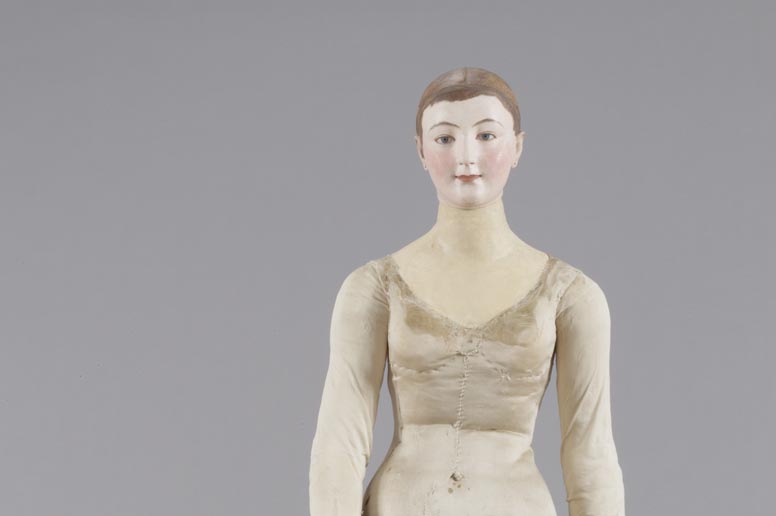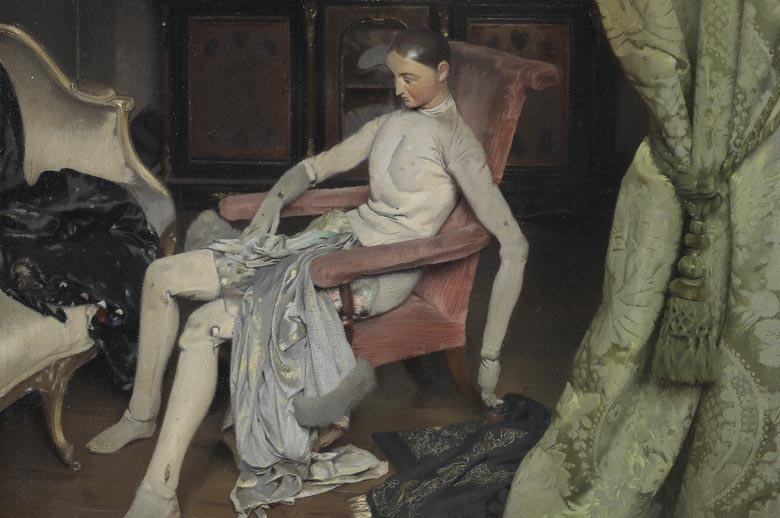The Black Brunswicker by John Millais is a painting I’ve seen many times before, but only now am I learning one of its biggest secrets.
The tender scene shows a soldier departing for battle while his sweetheart begs him to stay.
The young woman is Charles Dickens’s daughter, Kate, and the private is a real soldier, chosen by the artist for his good looks.
But the two were probably never in such a clinch.
Jane Munro, curator of a new exhibition at the Fitzwilliam Museum, explains:
“Propriety dictated that two unacquainted members of opposite sexes could not assume so intimate a pose in real life, so the models sat at di fferent times and a mannequin was called in, leaving the Life Guard to embrace a (presumably stu ffed) lay figure, while his fair lady, Miss Dickens, ‘leant on the bosom of a man of wood’.”
Silent Partners: Artist and Mannequin from Function to Fetish opens at the museum on 14 October, running until January when it transfers to Paris. Visitors will be able to view life-size mannequins and dolls – many works of art in themselves – and over 180 artworks; some comical, some unsettling, but all of which reveal the fascinating, untold story of the studio dummy.
“The mannequin was a common figure in the studios of painters and sculptors from the Renaissance onwards,” Jane explains. “It was used to study perspective, arrange compositions, rehearse the fall of light and shade and, especially, to paint drapery and clothing. The mannequin was also a way of sparing living models from endless hours straining to maintain a pose.
“The 19th century was a turning point. Mannequin making became a profession in its own right and Paris became a leading centre of production. Competition was fierce to create and perfect the ‘naturalistic’ mannequin, one that was life-size, with an articulated skeleton that could move in realistic ways, and an exterior finish that was painted and padded to look – sometimes eerily – human.”

“The mannequins exercise a fascination as replicas of ourselves”
The closeness to human form was not lost on some artists, and there are stories of dummies being used for less-than wholesome pursuits… “Oskar Kokoschka’s doll was created under his artistic direction, in the image of his great muse and ex-lover, Alma Mahler, with whom he fell passionately in love in 1912. Their a ffair ended two years later, and after the war he discovered Alma had remarried. To console himself he commissioned a life-sized doll, modelled on Alma, intended to allow him to always have the woman of his dreams by his side. Her role was as sexual substitute or fetish, and he featured it in a number of his paintings. He finally beheaded the doll at a party.”
Summing up the allure of these lifelike but lifeless figures, Jane explains: “The mannequins exercise a fascination as replicas of ourselves. We try to ‘read’ them as fellow human beings but constantly fail because they lack key ‘signals’ to read, such as movement and facial expression, but still suggest that there is something of a life within.”
She continues: “Artists understood this and, as the exhibition will show, came to exploit this in a range of imaginative, playful and sometimes troubling ways.”

